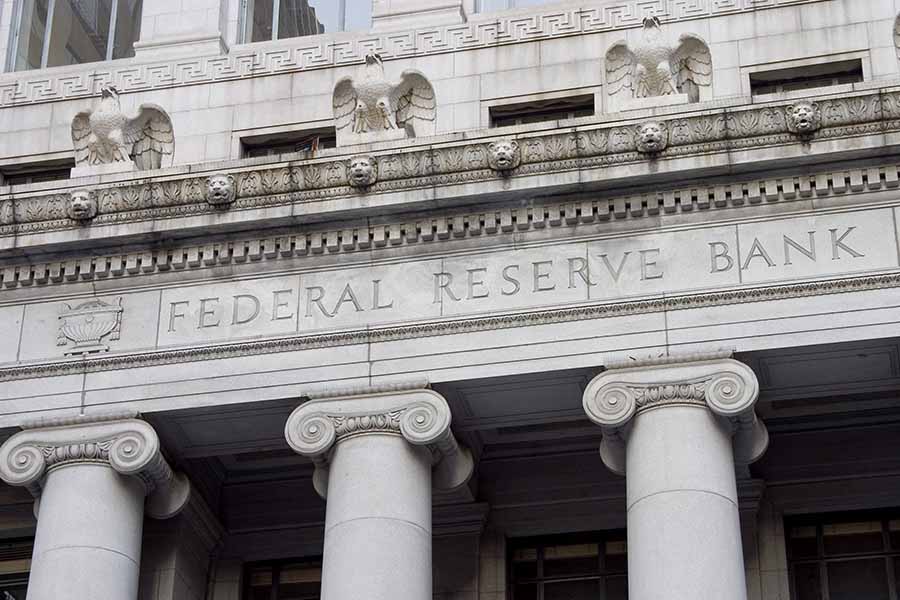Fed Cuts With a "Wait and See" Attitude

Summary
As expected, the Federal Open Market Committee (FOMC) cut the fed funds rate by 25 basis points, to a range of 4.50% to 4.75%. The decision was unanimous and follows a larger 50 basis points cut at the September FOMC meeting. The Federal Reserve (Fed) has suggested it favors a more measured and careful approach to rate cuts moving ahead. It's also clear the Fed continues to lean a bit more into its full employment mandate over its price stability mandate.
Per the accompanying statement: "The committee judges that the risks to achieving its employment and inflation goals are roughly in balance" and the "economic outlook is uncertain," with the committee "attentive to the risks to both sides of its dual mandate."
A key deletion from the September FOMC statement was the line about achieving "greater confidence" and inflation is moving sustainably toward 2%, but noting that inflation has "made progress." It appears post-election uncertainty—specifically around proposed tariffs, an immigration crackdown and tax cuts' implications for inflation—contributed to the decision to amend that part of the statement.
There was also a change to the language around labor market conditions, noting that "since earlier in the year, labor market conditions have generally eased, and the unemployment rate has moved up but remains low."
There were no announced changes to the Fed's plans for its balance sheet, with the statement noting that the FOMC will continue reducing their holdings of Treasury and agency/mortgage-backed securities. There was also nothing in the statement that suggests the Fed is biased toward another rate cut at the December FOMC meeting.
Presser highlights
As usual, in the interest of getting this into the publishing queue, this note covers the first 30-40 minutes of the Fed chair Jerome Powell's press conference.
- Powell's opening comments largely mirrored what was in the FOMC statement.
- He noted that improving supply conditions have supported the economy this year, but that the impact of hurricanes have muted recent payroll gains.
- Although headline inflation has moved closer to the Fed's 2% target, core (ex-food/energy) inflation is still "somewhat elevated."
- Current labor market conditions were described as "less tight" than pre-pandemic conditions, which is a change from Powell's previous description of the labor market having returned to pre-pandemic conditions.
- Cutting rates too aggressively could hinder progress in getting inflation down but moving too slowly "could unduly weaken economic activity and employment."
- The election, in the near term, will have "no effect" on the Fed's decision-making given there is no knowledge yet of the "timing or substance" of economic policy changes going forward.
- Given knowledge that government policy will eventually impact the economy, "forecasts of those economic effects would be included in our models of the economy and would be taken into account through that channel."
- Per Treasury yields and the recent surge, "it's too early to really say" where yields are headed short-term; but that the increase is "nowhere near where it was a year ago" while also noting that moves don't appear to be principally about higher inflation expectation, but instead more about stronger growth.
- When asked whether September's Summary of Economic Projections (SEP) is still valid, Powell did not directly answer the question and instead pointed to the December meeting, at which point they will have better information.
- The Fed isn't ruling "out or in" another rate cut in December.
- None of the changes to the statement were "meant to send a further signal."
- "We don't know the right pace and we don't know exactly what the destination is. The point is to find the right pace and the right destination as we go."
- When asked about the deficit/debt impact on bond yields, Powell said "we don't comment on fiscal policy" but that if tax policy does change, it would be added to economic models "along with a million other things" to gauge the impact.
- "Policy is still restrictive," even following today's rate cut—and the "labor market is cooling"—so, further "recalibration" might be necessary (keeping the door open for a December rate cut).
- The "level of our debt relative to the economy is not unsustainable" but "the path is unsustainable."
- A VERY BLUNT and direct answer to a question about whether Powell would step down if the Trump administration suggested he should: "No." In other words, he will neither leave nor resign.
- In response to a question about possible Trump administration's attempts at demotions of Fed governors or Vice Chairs, Powell bluntly stated that it's "not permitted under the law."
In sum
Without a doubt, the headline of the day was Powell's blunt insistence he will not bow to any political pressure for him to step down. In terms of market action, as the press conference moved along, longer-term Treasury yields moved lower—from a high of 4.45% earlier in the day, to 4.3% as of this writing. Stocks generally trended higher in the aftermath of the announcement; adding to gains from yesterday.